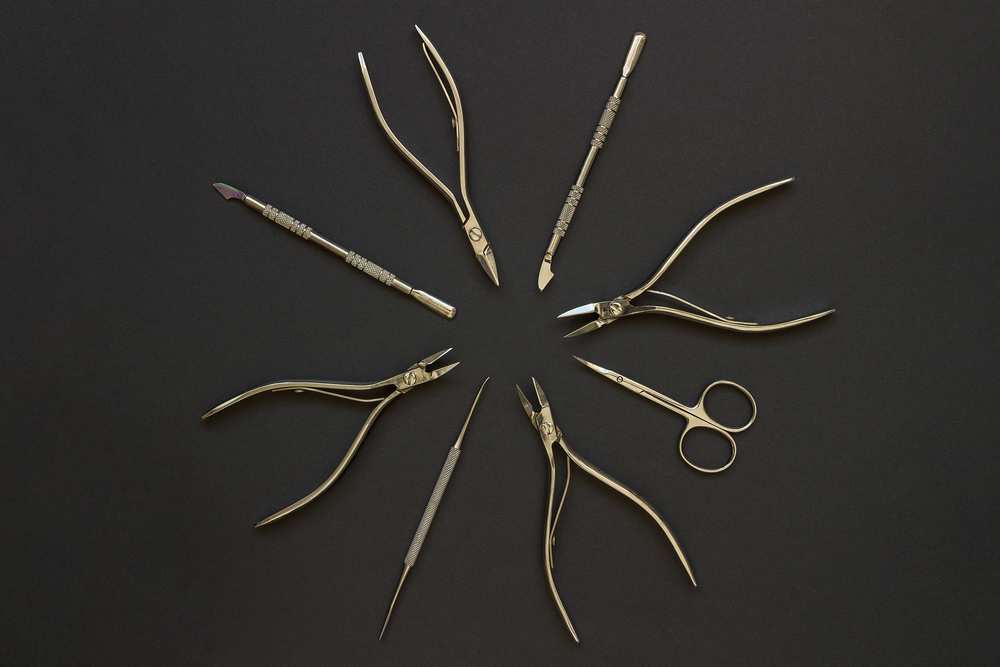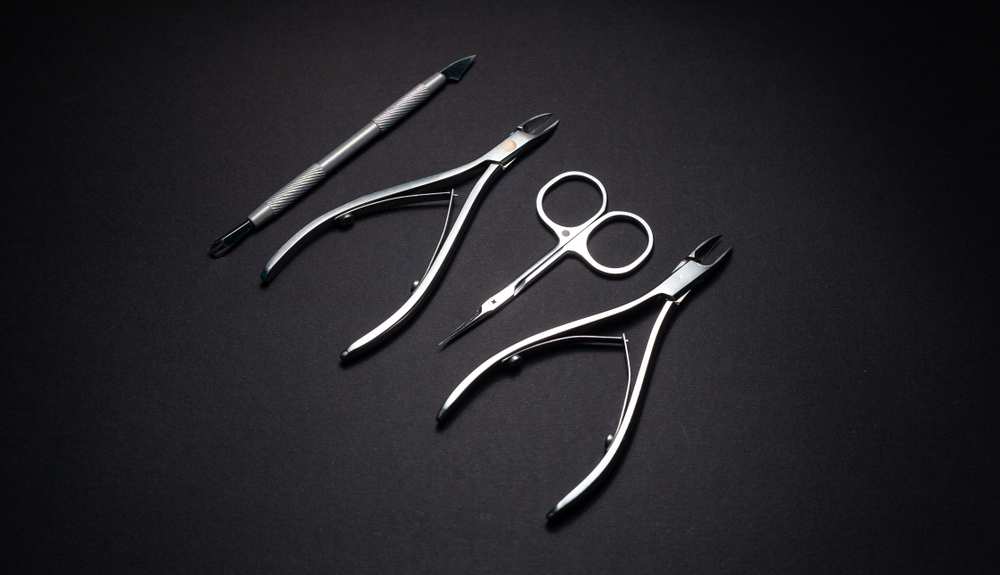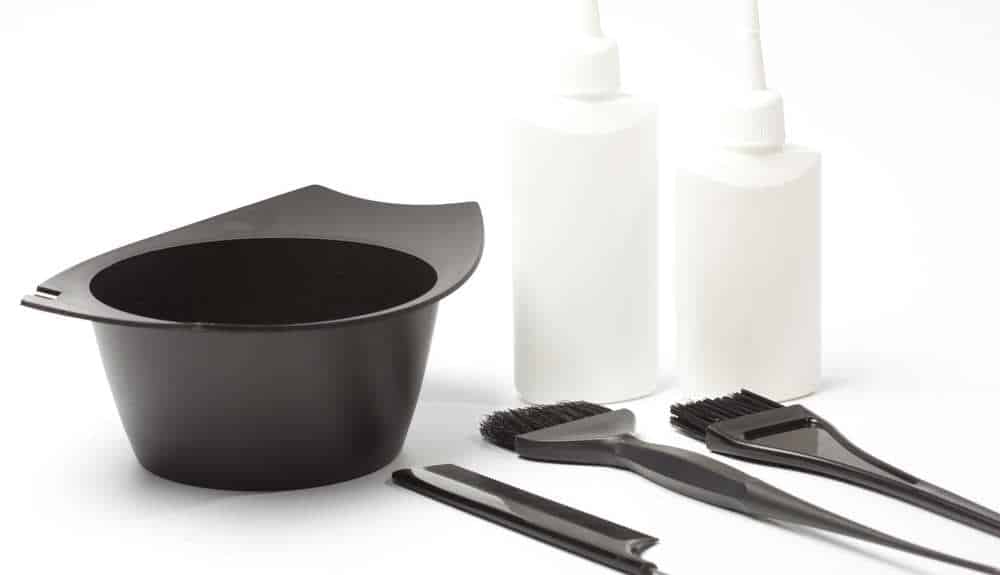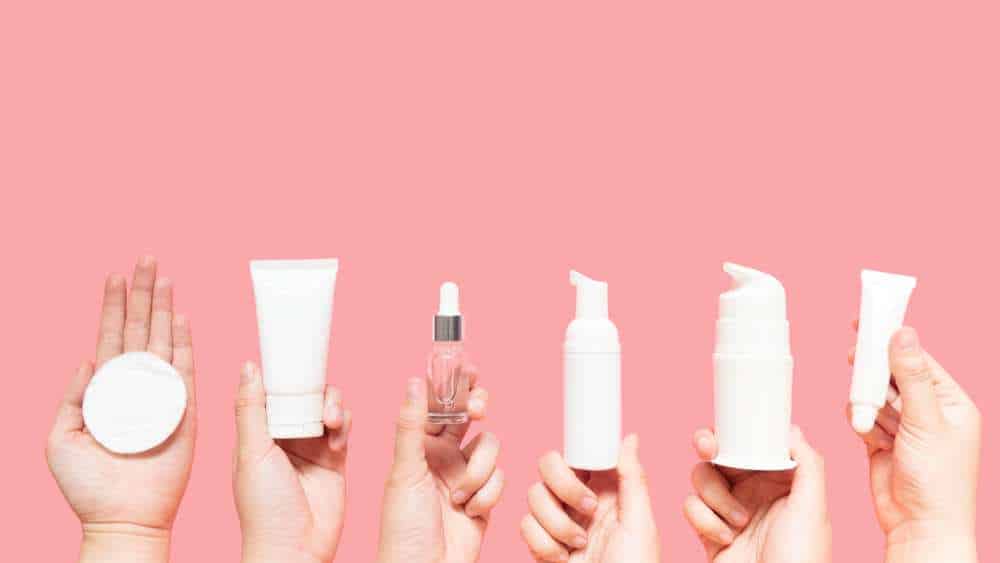We all have a pair of cuticle nippers somewhere in our bathrooms, wasting away. But why? Well, cuticle nippers aren’t like regular scissors. They are curved inwards, and the cutting edge is straight. As the names say, they are meant for cutting off cuticles, which solves the mystery of why they aren’t used as often.
The trouble with this special manicure tool is that when they go dull, they tear off the skin instead of cutting, which can be very painful. Have you ever thought of how to sharpen cuticle nippers? Can that be done at home, or you need to take them for professional sharpening?
This is where I come to the rescue and help you learn how to maintain your manicure tools as sharp and precise as the day you bought them.
What Exactly Are Cuticle Nippers?
Nippers are a special manicure tool that removes excess cuticles alongside your nails. These cuticles protect the nails from injuries and various harmful bacteria, so it is not hard to conclude why taking care of them properly is crucial. When choosing pliers, you need to consider a few things:
- Material – The most important attribute is, of course, the material from which they are made. Most models are made by special technology of medical stainless steel, and you can easily recognize them since they have a matte finish. The very important thing is that those models are more resistant to moisture, which increases hygiene and service life.
- Cutting surface – Nippers should never cling, scratch, or pull the delicate skin around the nails. Please make sure you always check the sharpness of a piece of polyethylene before purchasing them.
- Springs –Nippers should always have a convenient location in the hand so you can use them comfortably, and springs play an important role here. There are three types of springs for nippers: single, double, and spiral. There is not much science here, and every kind of spring works well; the only point is to find the right type of spring that will allow you to use your cuticle nipper comfortably.
Signs That Cuticle Nippers Need Sharpening
Sharpening will significantly prolong your manicure tools’ service life; that is why you need to take it seriously. Always check on them and try to accurately determine the moment when the tool should be sharpened. Pay attention to:
- All kind of changes in the metal such as stains or color change on the blade or any other working part of the tool
- Mechanical malfunctions
- Weak grip
- Deteriorated springs
It is best to check the sharpness of nippers by cutting through paper or plastic film. If the nippers are sharp enough, they will leave a smooth cut without tearing.
Can You Sharpen Dull Cuticle Nippers?
Yes, you can. It is very important to maintain your manicure tools sharp so that you can do your manicure precisely and without any risk of injuries. The best way to maintain cuticle nippers sharp is to grind them. You can do this at home, or you can take them to a professional. If you are not willing to spend some money on professional grinding (it is not cheap at all), you can follow my instructions and try to grind them on your own.
Types Of Sharpening
- There are two types of sharpening – manual sharpening and mechanical sharpening.
- The manual sharpening is also referred to as individual sharpening. This procedure is considered higher quality, but honestly, this mainly depends on how experienced the person is. They use magnified images and microscopes to reveal all notches, burrs, and defects on the blade, so this guarantees you the best results and the surgically sharp blade.
- The mechanical sharpening is done when the instrument is manufactured. It requires less time and effort, but this way, you significantly affect the quality of work. Instruments sharpened this way lose in durability. Also, the blades have different sharpening patterns along the entire blade length.
What Tools Do You Need?
- The preparation process is crucial when you are up to self-sharpen your nail tools. If you never did this before (like most people), it is highly recommended to practice sharpening something else like an old knife or old nail tools and avoid running spoil your favorite tools.
- For sharpening at home, you will need these tools:
- A special sharpening machine with a circle of diamond spraying.
- Felt napkins
- Polishing stones 12000 grit
- Whetstone
- Diamond-coated needle with the finest abrasiveness is suitable for home use
- Sandpaper
How To Grind?
- Grinding tools at home as hard as it sounds, but if you are willing to learn and have patience, you can be great at it after you spend some time practicing it. This procedure includes the following steps:
- Before you start working on sharpening, inspect the nippers thoroughly and unscrew all the screws to avoid damage and make it easier to work with
- Set the machine at minimum speed and always walk the cutting edge in a circle and always in one direction. Wipe the blade and check if it’s sharp enough; if not, repeat the procedure until you are satisfied
- Polishing and grinding always go together, so use a high-quality polishing stick or cloth
- Sanitize tools after grinding!
- Avoid using bars for polishing with abrasive less than recommended since they will damage the tool. A recommended abrasive is no less than 8 thousand grit
- Every tool has its own honing angle, so be aware that you can ruin the tool if you do not sharpen it at the correct angle
- Always sharpen the tool with care since just one awkward movement and cutting edge can get deformed, which leads to the unsuitability of the tool
- It would be best if you protect yourself with a mask, goggles, gloves
- After you follow these tips, you need to check the quality of your work. You can do a quick check by following these instructions:
- Make sure that the edges of the nippers are smooth and even
- There should be no gap between the cutting parts
- Lastly, pull the tool in your hand to make sure that you put all the screws back at their places
How Do You Sharpen A Cuticle Nipper With Sandpaper And Whetstones?
- If you’ve wondered how to sharpen cuticle nippers with sandpaper or whetstones, the process is the same for both tools. You will need to press the blade at about a 30–45º angle considering the sharpening tool and move the edge 5 to 10 times always forward across the surface. After you finished one side, turn the blade upside down and repeat the process. Wipe off the blade and polish it.

Why Should You Not Sharpen Tools On Your Own?
Like I already said, sharpening is not as easy as it may seem. Manual sharpening can be easily considered as an art since it requires fine skills and patience. There is a great risk of damaging the blades and mechanism, which can only be corrected by a trained professional.
In case you damaged your tool, the best option to restore the blunt or damaged instrument is to bring it to a specialist. This won’t be cheap, but the price justifies itself believe me. Choose shops that use the manual type of sharpening to maintain the instrument’s surgical precision.
Suppose the tweezers, nippers, nail files, or scissors are made of high-quality medical-grade steel. In that case, the risk of crumbling and changing the original shape in the sharpening process is minimal, yet you can still do it if you are inexperienced with grinding tools.
Also, sterilizing the instrument can lead to breaking the mechanism or affecting the blades’ sharpness, so it is always the best decision to leave it for the professionals.
How To Make Sure Your Tools Stay Sharp For A Long Time?
The sharpness of the manicure tools has its service life. Proper care for them will allow you to maintain them in good condition for an extended period of time. This does not mean you won’t need to sharpen them ever; it only means you will do it less frequently.
Follow these tips to extend the life of the instrument significantly:
- Clean the instrument after each use
- Do not use water for cleaning, as it can damage the top layer of the material. Always use specialized products for disinfection.
- Antiseptic liquids are great for maintaining manicure tools
- Always make sure your instruments are dry
- It is not recommended to use any manicure tool for another purpose
- The mechanisms of the instruments need lubrication from time to time
- Store them in protective cases or silicone nozzles and ensure that the cutting parts do not come into contact with each other
- Avoid storing them in places with high humidity
- If you expose the tools to disinfectant solution for a longer than it should you risk blunting of the blades
- Pay attention to the joints where dirt and particles of biological material can accumulate and clean them well
- Keep them away from the kids
- Consider sharpening your tools at the trained professional
In The End
Your manicure tools are only good if they are sharp. Dull nail clipper, nail file, or cuticle nipper can only damage your nails and skin and lead to some unwanted infections. Do not let that happen by frequently checking up on their condition.
If you see any changes, react immediately and try to buff down the edges to minimize the damage. In case you have a nail instrument that was left to sit in the bathroom for too long, consider taking it to a professional or buying a new manicure set.


